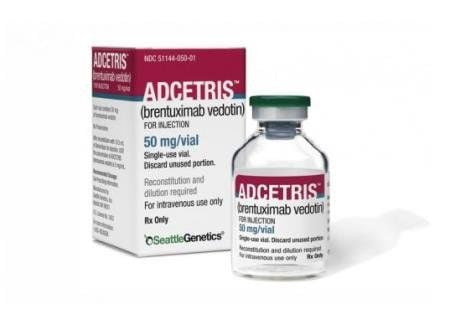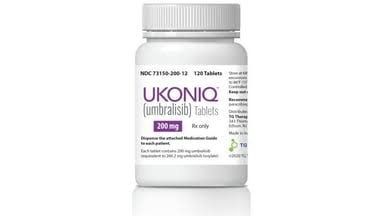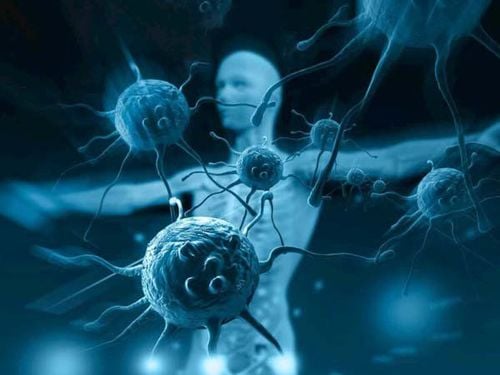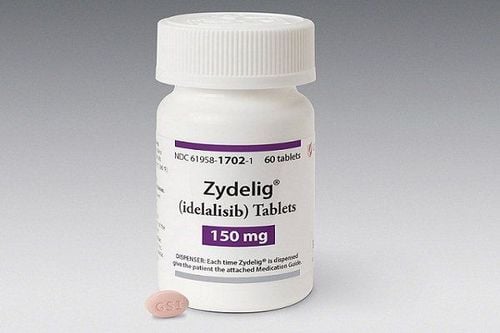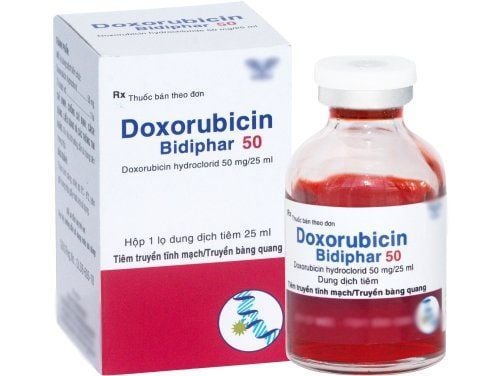This is an automatically translated article.
Post-transplant lymphoproliferative disorder (PTLD) is a rare, but well-known complication of solid organ transplantation and hematopoietic stem cell transplantation. So is lymphatic proliferation dangerous? Can a cell transplant cure this disease? Let's find out information about post-transplant lymphoproliferative disorder (PTLD) through the article below.
1. What is post-transplant lymphoproliferative disorder (PTLD)?
Post-transplant lymphoproliferative disorder (PTLD), a type of lymphoma that can result from a rapid increase in lymphocytes (immune) following solid organ transplantation (kidney, lung, heart, liver, lung) and bone marrow or allogeneic stem cell (cells from a donor) transplant. It is believed to be one of the most common post-transplant cancers. PTLD is associated with Epstein-Barr virus and immunosuppressive therapy. Immunosuppressive therapy puts patients at increased risk of infection and, in some patients, developing post-transplant lymphoproliferative disease. Early diagnosis and prompt treatment of these disorders are extremely important.
PTLD occurs because the immune systems of these patients are weakened to not allow them to accept the newly transplanted organ or bone marrow.
PTLD is characterized by the overproduction and spread of too many white blood cells (lymphocytes). This can cause complications ranging from a benign (non-cancerous) enlargement of an organ or tissue from overproduction of these cells (hyperplasia) to the development of a malignant form of lymphoma. count (cancer). In most cases, PTLD is associated with the Epstein-Barr virus, a common virus that usually doesn't cause problems in people with normally functioning immune systems. The abnormal white blood cells that grow out of control, usually a type of lymphocyte called a B cell, can be infected with the Epstein-Barr virus. After transplantation, the dormant Epstein-Barr virus is reactivated, or the transplant recipient becomes infected with the virus for the first time.
PTLD is classified as lymphoma, a group of related cancers that affect the lymphatic system. The lymphatic system acts as part of the immune system and helps protect the body against infection and disease. It consists of a network of tubular channels (lymphatic vessels) that drain thin liquid fluid called lymph from different areas of the body into the bloodstream. Lymph accumulates in the small spaces between tissue cells and contains proteins, fats, and certain white blood cells called lymphocytes. As lymph moves through the lymphatic system, it is filtered by a network of small structures called lymph nodes that help remove microorganisms (e.g. viruses, bacteria, etc.) other object. Groups of lymph nodes are located throughout the body, including, but not limited to, the neck, under the arms (armpits), at the elbows, and in the chest, abdomen, and groin. Lymphocytes are stored in the lymph nodes and can also be found in other lymphatic tissues. In addition to the lymph nodes, the lymphatic system includes the spleen, which filters worn out red blood cells and produces white blood cells, and bone marrow, which is the spongy tissue inside the bone cavities that produces blood cells. blood cells. Lymphatic tissue or circulating lymph cells may also be located in other areas of the body.
There are two main types of lymphocytes: B lymphocytes (B cells), which can produce specific antibodies to "neutralize" certain invading microorganisms, and T lymphocytes (T cells) , which can directly kill microorganisms or support the activities of other lymphocytes. Some T cells are cytotoxic lymphocytes, and they work by eliminating other cells that are damaged, stressed, or infected. In most people with PTLD, too many B cells are produced, but T-cell PTLD can also occur.
The incidence and prevalence of post-transplant lymphoproliferative disease varies by type of transplant and affects about 1%-2% of people who have had a kidney (kidney) transplant. Heart and lung transplant rates are higher. PTLD occurs most often with gastrointestinal and multi-organ transplants. PTLD is the most common cancer affecting solid organ transplant recipients after squamous cell carcinoma of the skin. In a retrospective multicenter study, the overall incidence of PTLD in hematopoietic stem cell transplant recipients was reported to be 3.2%.
2. Causes of post-transplant lymphoproliferative disorder
When patients who have undergone a stem cell or solid hematopoietic organ transplant receive drugs to suppress their immune system, this can lead to reactivation of Epstein-infected B cells- Barr, demonstrates uncontrolled growth and accumulation. This is most likely due to a lack of T cells due to immunosuppression. Some T cells called cytotoxic T cells work by eliminating other cells that are damaged, stressed, or infected. Because cytotoxic T-cell levels are low, Epstein-Barr-infected B cells are allowed to grow and spread.
Occasionally, PTLD occurs due to reactivation and uncontrolled growth of Epstein-Barr-infected B cells from the donor organ. This is most common in people who have had hematopoietic stem cell transplants. When an organ or stem cell is donated, other cells are also donated, including B cells. If the organ or stem cell donor has ever been infected with Epstein-Barr, the damaged cells This dormant infection will be transmitted to the recipient. This is most common with solid organ transplants. PTLD can also occur if a transplant recipient is first infected with the Epstein-Barr virus.
PTLD occurs in only a small percentage of transplant recipients, regardless of whether or not they are infected with Epstein-Barr. For example, the long-term risk in kidney transplantation is 2%, but it is higher in other solid organ transplant patients. Therefore, researchers believe that there are additional factors necessary for the development of these disorders. Although the Epstein-Barr virus is associated with the majority of those affected, some people do not have any evidence of this infection. Researchers aren't sure what causes PTLD in people with Epstein-Barr negative PTLD results.
There are several identified risk factors for PTLD. These risk factors may vary by type of implant. For solid organ transplants, risk factors include donor and recipient EBV serostatus and which organ is being transplanted. For hematopoietic stem cell transplants, the source of the stem cells affects the level of risk. Stem cells donated from unrelated or inappropriate individuals based on tissue type increase the risk. The use of antibody preparations containing anti-hematopoietic globulin or anti-CD3 antibodies also increases the risk. Being over 50 years old is also a risk factor for PTLD after hematopoietic stem cell transplantation. Chronic transplant-host disease, in which immune system cells from donated stem cells attack healthy cells in the recipient,
Risk factors for both types of transplant including the degree of immunosuppression and the type of drug used, in particular, the decrease in cytotoxic T cells (T-cell depletion); Epstein-Barr virus serostatus in transplant recipients, determining whether antibodies against Epstein-Barr virus can be detected in the blood; less human leukocyte antigen matching between donor and recipient cells (HLA is used by the immune system to recognize the body's cells so they are not destroyed); a history of cancer (malignancy) prior to transplantation in the recipient; and younger age.
PTLD occurs in solid organ transplants and hematopoietic stem cell transplants. A solid organ transplant is when a surgeon removes a solid organ such as the heart, lungs, liver, or kidneys because the organs are no longer functioning fully and cannot be improved. The organ is replaced with a healthy, well-functioning organ from a donor.
Hematopoietic stem cell transplant is a type of bone marrow transplant. Hematopoietic stem cells are special cells found in the bone marrow that produce different types of blood cells (eg, red blood cells, white blood cells, platelets). In a total stem cell transplant, stem cells are donated from another person, usually from a closely matched family member. Allogeneic stem cell transplants can be used for various conditions but are most commonly used to treat blood cancers. In general, this therapy is reserved for people who have not responded to other treatment options and younger patients who meet specific criteria.
3. Symptoms of Post-transplant lymphoproliferative disorder (PTLD)
Specific symptoms and severity of PTLD can vary widely from person to person. Some affected people develop a mild, noncancerous form of overgrowth of the affected tissue, while others may develop a life-threatening form of lymphoma. The mild, benign form of PTLD can resemble reactive hyperplasia, a normal process in which lymph nodes become enlarged in response to infection or inflammation. PTLD can be localized, which means the disease affects only a specific area of the body, or widespread (universal), which means it affects several different areas of the body. They can also cause serious, life-threatening complications. In addition, PTLD can affect the transplanted organ, and these disorders often involve extrasensory tissue.
The 2017 World Health Organization (WHO) classification divides PTLD into six subclasses:
Hodgkin's Disease Non-Hodgkin's lymphoma X stem cell proliferation Disorders benign reactive lymphoproliferative disorders (including hyperproliferative disorders Post-transplant lymphoproliferative disease [PTLD]) Plasma cell neoplasms Skin T-cell lymphomas (primarily in heart, pancreas, and bone marrow transplantation; the first case associated with liver transplantation was reported in 2012) Specific signs and symptoms depend on several factors including the areas of the body affected and the type of PTLD. Affected individuals often develop vague and possibly nonspecific symptoms, meaning symptoms common to many different disorders or conditions. When faced with lymphoma, these symptoms can come and go and are sometimes referred to as 'symptoms B.'. These symptoms may include persistent, chronic fever; unintended weight loss, and excessive sweating, especially at night (night sweats). Some individuals develop abnormally enlarged lymph nodes (nodules), fatigue, or a general feeling of ill health (malaise).
PTLD can often have a rapid and severe development (end stage). The disease can spread throughout the body and often involves organs and tissues outside of the lymph nodes (extratidal involvement). The exact organs involved can vary, but typically include the gastrointestinal tract, the transplanted organ (allograft), and the central nervous system. Specific signs and symptoms will depend on the organ system(s) involved. For example, central nervous system involvement may be associated with seizures and neuropsychiatric symptoms. Headaches, nausea, vomiting, and vision problems can result from an increase in pressure in the skull (intracranial pressure).
PTLD can also be called early-onset or late-onset. Early-onset means that a lymphoproliferative disorder develops soon after transplantation, usually within twelve months. Late-onset means that a lymphoproliferative disorder develops after twelve months. In about half of patients, PTLD occurs within the first year after transplantation. Early-onset PTLD is more likely to be characterized by the presence of Epstein-Barr virus in affected B cells, and may include donor organ involvement or extracellular sites . Late-onset PTLD is more likely to have disease that spreads outside the lymphatic system (extranodal), and often leads to the development of malignant lymphoma.
4. Diagnosis of post-transplant lymphoproliferative disorder (PTLD)
If your doctor suspects PTLD, the first step is a physical exam and tests, which usually include:
Blood tests and X-rays. Check for Epstein-Barr virus infection in the blood. A CT scan checks for PTLD in the neck, chest, or abdomen. If you have digestive complaints, you may have an endoscopy or colonoscopy.
Other tests can help find out the extent of the disease and see if it has spread through the lymphatic system to other parts of the body.
A radioisotope scan (PET scan) is useful to see if PTLD has spread to your liver, bones, bone marrow, or spleen. You may need a bone marrow aspiration (removal of some fluid for testing) and a biopsy (removal of some tissue for testing) if you are concerned that PTLD has spread to the bone marrow. Your doctor may perform a biopsy if they find a mass or enlarged lymph node. The lab technician will remove the tissue and look at it under a microscope. Examine thin slices of tissue for the presence, type, and arrangement of precancerous or cancerous cells that are characteristic of the disease.
5. How is post-transplant lymphoproliferative disorder (PTLD) treated?
Post-transplant lymphoproliferative disease is directed towards specific symptoms that are evident in each individual. The main goal of treatment is to cure PTLD, while preserving function and health of the implant.
Specific treatment and intervention procedures may vary, depending on many factors, such as the type of implant; disease stage; specific lymphoma subtypes; tumor size; related organ systems; the presence or absence of certain symptoms; an individual's age and general health; and/or other factors.
Gradual taper of immunosuppressants may be recommended and may be sufficient for people with early PTLD. Such a reduction may allow the immune system to recover and fight off the Epstein-Barr infection. However, it is not always possible to reduce the dose of immunosuppressants sufficiently because reducing these drugs may increase the risk of post-transplant complications including transplant-host disease or organ rejection.
If PTLD is localized to a specific area of the body, surgery may be recommended to remove the tumor and/or surrounding lymph nodes.
Rituximab (Rituxan®) can be used. This drug can kill Epstein-Barr-infected B cells and can be used alone as a single agent (monotherapy) or as part of a drug regimen (immunochemotherapy). ) including other drugs. Rituximab is classified as a monoclonal antibody or biologic therapy - the drug works like an antibody, but is made artificially in a lab. Rituximab is recommended for CD20 + PTLD. CD20 is a substance found on the surface of B cells that can be targeted by rituximab. PTLD may recur after successful treatment with this drug. Rituximab is also a type of immunotherapy because it aims to enhance the body's innate ability to fight cancer cells by using the immune system.
Your doctor may recommend anti-cancer drugs (chemotherapy). Chemotherapy is often given along with rituximab in patients with CD20+ disease (immunotherapy). In patients without CD20+ disease, different chemotherapy drug combinations, called regimens, will be recommended. When chemotherapy is given, the specific chemotherapy regimen used may vary. No standard regimen has been defined for PTLD. Different medical centers may have their own preferences about the best way to access treatment and what chemotherapy regimen is best for each individual.
The use of radiation to kill cancer cells (radiotherapy) is also considered. This is usually recommended for people whose disease is localized to one area of the body or in those with central nervous system involvement.
Antiretroviral therapy, which is the use of drugs that are effective against viruses, has been tried in people with PTLD. These drugs, including acyclovir, ganciclovir, and foscarnet, are often used along with a reduction in the immunosuppressive dose. These drugs are not effective in treating PTLD when taken on their own, and overall effectiveness in treating PTLD has yet to be proven.
Please dial HOTLINE for more information or register for an appointment HERE. Download MyVinmec app to make appointments faster and to manage your bookings easily.
References: cincinnatichildrens.org, rarediseases.org



